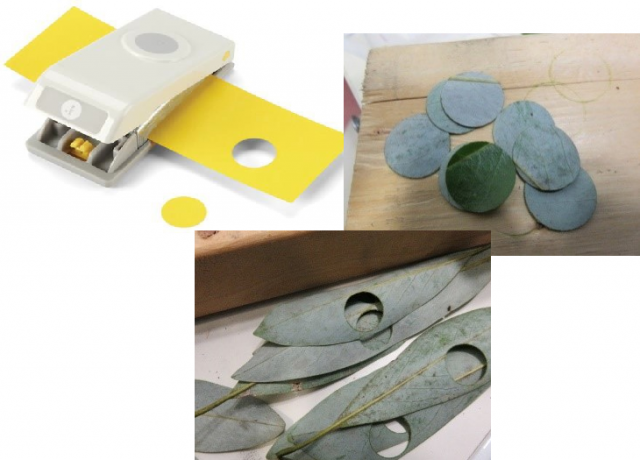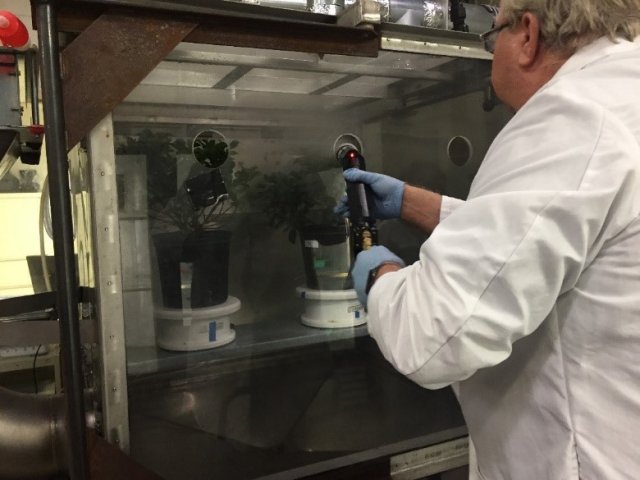Assessment of Decontamination Options for Vegetative Materials Commonly found on United States Coast Guard Installations
Contaminated vegetation can be a source of exposure after a wide-spread release of a persistent chemical, biological, or radiological agent. Vegetation can pose significant challenges for cleanup – particularly with identifying and applying decontamination approaches over wide areas that will be effective and not harm the environment. The purpose of this study is to determine effective sporicides useful to decontaminate vegetation contaminated with the Bacillus anthracis spores – the persistent biological agent that causes anthrax. Tests will be conducted using a well characterized surrogate for B. anthracis, B.globigii (Bg), to enable the studies to be conducted on various small live plants and small leaf/foliage. Plant species to be used are representative of typical vegetation that might be encountered on a U.S. Coast Guard base.
The study will aim to identify decontamination methods that can effectively kill the biological agent without harming the plants.
Proof of Concept
The first phase of the project, recently completed, is the proof of concept phase. In this bench-scale testing coupons (samples) were prepared from two plant species, Gold Dust Aucuba and White Indian Hawthorn (evergreens), with galvanized steel coupons used as reference material. The coupons were inoculated with 1 × 107 Bg spores.

Decontamination solutions included two commercial peracetic acid solutions (Jet-Ag 15% [peroxyacetic acid agricultural sanitizer] and Oxidate® 2.0), pH-adjusted bleach and dichlor (dichloro-S-triazinetrione). These solutions were chosen due to their effectiveness in previous studies and their wide availability. The pH-adjusted bleach was prepared using a ratio of 8:1:1 water/germicidal bleach/5% acidic acid. The solutions were sprayed onto the coupons using a pressurized hand sprayer. Using the finest mist setting, the coupons were sprayed for three seconds at a frequency of 0, 5 and 10 minutes for a total contact time of 15 minutes.
For a decontaminant formulation to move forward to pilot scale testing a target of six-log reduction was set. This target is a standard set for approval of sporicidal products in controlled testing.
Pilot Scale Testing
Based on the successful proof of concept, and the desire to begin pilot scale testing with decontamination agents that are commercially available for use on vegetation, Jet 15% and dichlor were selected for pilot scale testing. Plant materials chosen for the pilot scale tests included White Indian Hawthorn (evergreen), Blueberry shrub (deciduous), Japanese spurge (ground cover) and pine bark.

The plants will be contaminated with 1 × 105 aerosolized Bg spores. Decontamination liquids will be applied using an electric backpack sprayer set to a consistent flow rate. Plants will be positioned on a variable speed turntable set to a consistent speed while decontamination spray is applied. Plants will be sampled by taking punches of leaf material for analysis or by sampling the plants with a 3M Sponge-Sticks™.
Phytotoxicity Evaluation
Simple phytotoxicity evaluations will be performed on plant surfaces exposed to spray conditions determined to be efficacious. Evaluations will be performed as visual inspections that focus on whether there are any changes in leaf color, leaf loss, fullness, texture, and whether the plant dies. Evaluations will take place twice a week for up to 4-8 weeks after exposure. During each evaluation, the population of areas showing evidence of fading or changes in color, the number of leaves shed, and locations showing changes in texture (e.g., wilting) will be recorded.
